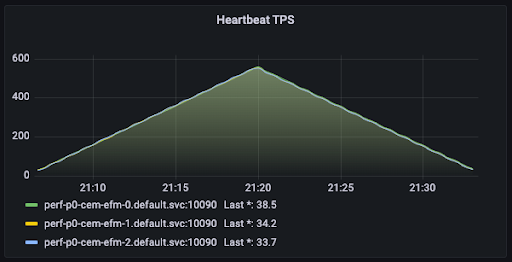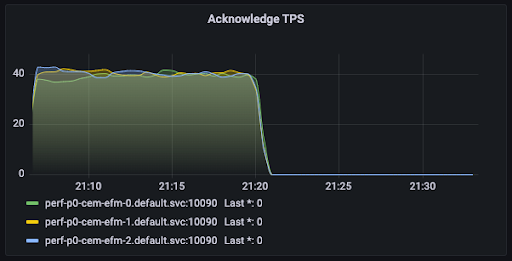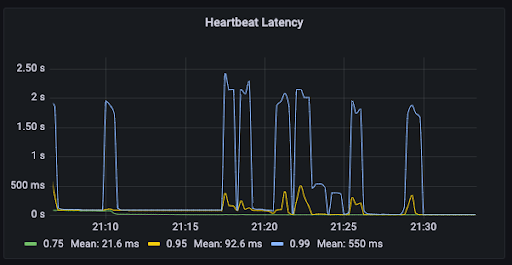Agents registering to EFM
Learn about the estimated number of requests, latencies, CPU usage, memory usage, and network usage when agents register to Edge Flow Manager (EFM).
In this scenario, 100000 agents are registering into EFM under the same agent class. 120 new agents are registered every second. Registering the agents takes 833 seconds. Heartbeat interval is 60 seconds. Each agent heartbeats 14 times. This results in nearly 1800 heartbeat TPS maximum. After an agent sends all of the 14 heartbeats, it does not send more so after the heartbeat TPS reaches its maximum. The heartbeat TPS then starts to decrease slowly.
The goal of the test is to demonstrate that all agents can be registered successfully with the given configuration.
Number of requests



Latencies
Most of the time latencies are below 100 ms with peaking up in 5 seconds.



CPU usage


Memory usage


Network usage
The aggregated network in-bound rate tops out at approximately 100 MB/s, 30 MB/s per EFM node, and 5 MB/s for the database instance. Higher network traffic can be observed in the first half of the test. The reason behind this is when the agents are registering to EFM with sending a lightweight heartbeat, EFM requests the agents to send the agent manifest. Agent manifests are an order of magnitude higher in size than lightweight heartbeats.


